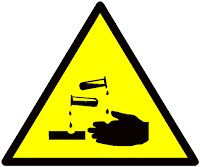Vibration sensors are the initial source of machinery information upon which productivity, product quality and personnel safety decisions are based. When selecting a piezoelectric industrial vibration sensor (acceleration, velocity, or displacement) for a specific predictive maintenance application, many factors should be considered so that the best sensor is chosen for the application. The user who can answer application specific questions will be able to find the best vibration monitoring solution.
What to measure: acceleration, velocity or displacement?
Very obvious question but many points to keep in mind.Which signal variety is required for your application? Some industrial sensors can output temperature along with vibration.
Do you need a top exit, side exit or a low profile connection?
Sensor geometry has little effect on its performance, but consider factors such as space available and where a maintenance engineer can operate safely.
What type of mounting is needed?
There are a number of ways to mount an accelerometer to the unit under test (UUT), and methods include everything from permanent mounting to temporary methods. Here are a few of the most common mounting methods.


The best mounting method uses a threaded stud or screw. Stud/screw mounting provides the best transmissibility at high frequencies since the accelerometer is virtually fused to the mounting surface. High-frequency response can be enhanced by the application of light oil between the accelerometer and the UUT. If this method of mounting is desired, accelerometers should be purchased that are designed for stud and/or screw mounting.
Adhesive mounting is often required, especially on small surfaces and PC boards. The preferred mounting adhesive is a cyanoacrylate because it can be easily removed (with the proper removal techniques). Many accelerometers are specifically designed for adhesive mounting and this fact will be noted on the data sheet. A stud-mount accelerometer may be mounted using an adhesive, but a cementing stud should be used to prevent the adhesive from damaging the accelerometer’s threads.
Does your application require uniaxial, biaxial or triaxial measurement?
Some applications monitored in more than one vibration axis. Depending upon the requirement one can choose vibration sensors for multi-directional machine monitoring and balancing. Theses sensors are also easier to mount than two/three individual sensors.
What is the vibration amplitude?
The maximum amplitude or range of the vibration being measured determines the sensor range that can be used. Typical accelerometers sensitivities are 100 mV/g for a standard application (50 g range) and 500 mV/g for a low-frequency or low-amplitude application (10 g range). General industrial applications with 4-20 mA transmitters commonly use a range of 0-1 in/s or 0-2 in/s.
What is the frequency range?
Physical structures and dynamic systems respond differently to varying excitation frequencies. A vibration sensor is exactly same. A sensor that acts as a dynamic system with one degree of freedom exhibits natural frequencies. It’s critical to select a sensor with a usable frequency range that includes every frequency you’re interested in measuring.
What is the temperature range required?
Applications with extremely high temperatures can pose a threat to the electronics built into accelerometers and 4-20 mA transmitters. Charge-mode accelerometers are available for use in very high temperature applications. The sensitivity variation versus temperature must be acceptable to the measurement requirement. Therefore, sensors with integral hard-line cable are available for applications hotter than 500° F.
Are any corrosive chemicals present?
Sensors and cables should be resistant to chemicals present, if any.
Is the atmosphere combustible?
Vibration sensors certified as being Intrinsically Safe should be used in areas subjected to hazardous concentrations of flammable gas, vapor, mist, or combustible dust in suspension.
Are intense acoustic or electromagnetic fields present?
Is there significant electrostatic discharge (ESD) present in the area?
ESD can be destructive and may leave a sytem in an unknown state from which recovery is impossible.
Is the machinery grounded?
To avoid spurious 50Hz pick-up from surrounding equipment it is advisable for the cases of the sensors.
Will it be submersed in liquid?
Industrial accelerometers with integral polyurethane cable are completely submersible in liquid for permanent installation.
Are there sensor size and weight constraints?
Sensosr size should be decided as per space available. As a rule-of-thumb, the weight of the accelerometer should be no greater than 10% of the weight of the test article.
Other questions must be answered about the connector, cable, and associated electronics:
- What cable lengths are required?
- Is armored cable required?
- To what temperatures will the cable be exposed?
- Does the sensor require a splash-proof connector?
- What other instrumentation will be used?
- What are the power supply requirements?
To download PDF please click here.
Check out the latest news, insights, and opportunities from VibraSens.
Check out the latest news, insights, and opportunities from VibraSens.










